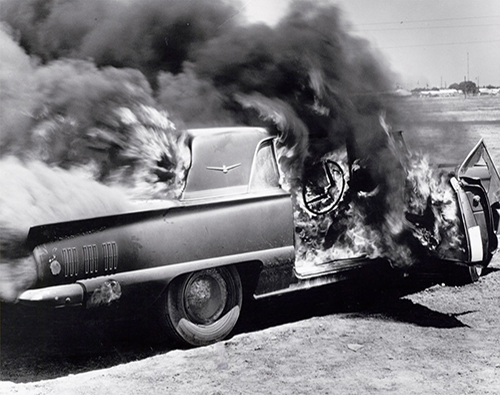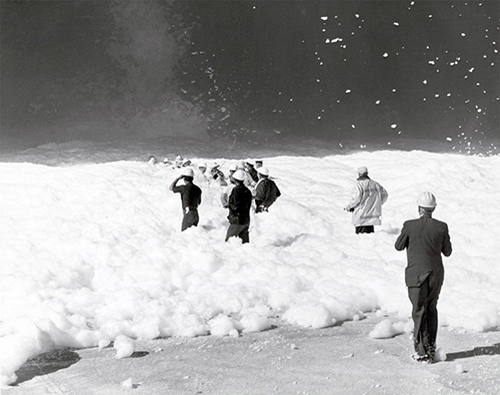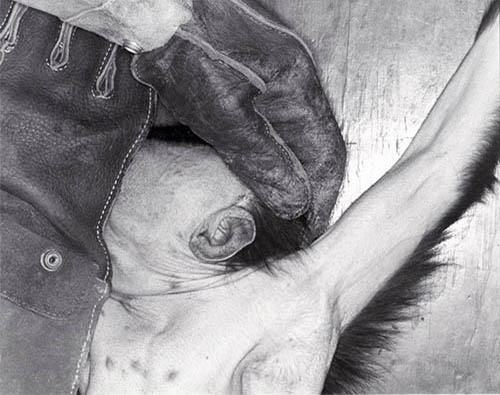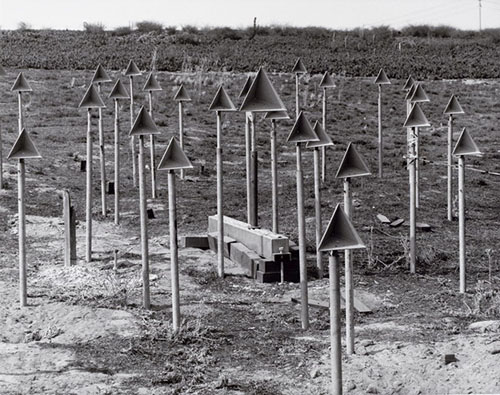 |
They were two guys from Van Nuys – guys for whom freeways, malls, subdivisions and Hollywood billboards formed the backdrop to their youth. They were not, by their own estimations, likely candidates for cultural monkey wrenching. But when Larry Sultan (1945-2009) met Mike Mandel at SFAI in 1973, they realized that photography couldn’t be moved forward by repeating the work of the f/64 group which held sway for far longer than most people realize in the years before Conceptualism took hold.
.jpg) |
Determined to boost awareness of how mass media creates and manipulates desire, they appropriated well-known advertising strategies and re-presented them on donated billboards, forcing passersby to wonder if they were viewing corporate ad campaigns or elaborate hoaxes. Their scheme represented a perfect confluence of opposing interests: Outdoor media companies, under fire for visual pollution, wanted to burnish their image by giving away space to artists; Sultan and Mandel, seeking to expose the inner workings of advertising, took the offers and turned the tables. But, as the documentation presented here shows, distinguishing between these competing agendas wasn’t always easy.
.jpg) |
In Chicago Workshop (1978), the artists papered over an existing sign, leaving intact only the headline (“The New Chevrolet”) and the tagline (“Now that’s more like it”). It appeared next to an altered Marlboro billboard in which a cigarette droops from a male model’s lips –deflating the phallic poses typical of cigarette ads. Complicating matters further: in their photo of the scene, the artists captured, in the middle distance, a black man driving a Buick Electra. Such an act today might be labeled profiling, but it accurately described the demographic and psychographic calculations built into Big Tobacco’s addiction schemes. A similar life-imitating-art quality beams out from Electric Energy Consumption, a 1976 photo of a billboard placed in the Mission District. In it we see two scowling women at the bottom of the frame and a magnificently dented ’63 Studebaker exiting an alley. From the building on which the ad is mounted, signs jut into view; the closest reads “Sun Rest Corner,” a convergence of imagery worthy of Robert Frank or Garry Winogrand.
 |
 |
 |
 |